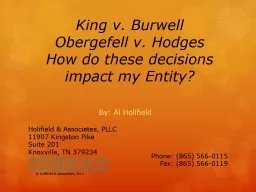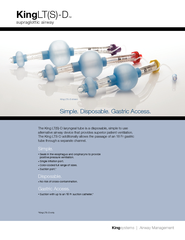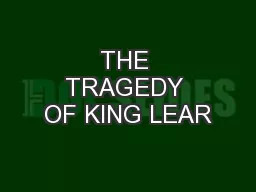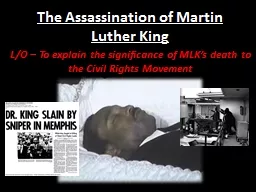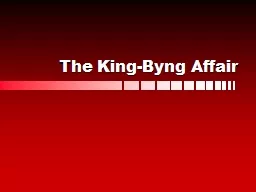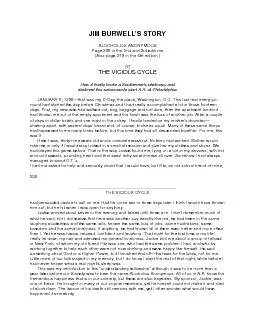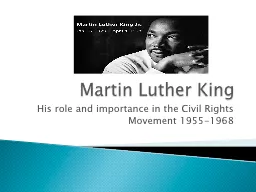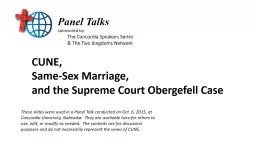PPT-King v. Burwell Obergefell
Author : tatiana-dople | Published Date : 2019-12-14
King v Burwell Obergefell v Hodges Tibble v Edison How do these decisions impact my Entity By Al Holifield Holifield amp Associates PLLC 11907 Kingston Pike Suite
Presentation Embed Code
Download Presentation
Download Presentation The PPT/PDF document "King v. Burwell Obergefell" is the property of its rightful owner. Permission is granted to download and print the materials on this website for personal, non-commercial use only, and to display it on your personal computer provided you do not modify the materials and that you retain all copyright notices contained in the materials. By downloading content from our website, you accept the terms of this agreement.
King v. Burwell Obergefell: Transcript
Download Rules Of Document
"King v. Burwell Obergefell"The content belongs to its owner. You may download and print it for personal use, without modification, and keep all copyright notices. By downloading, you agree to these terms.
Related Documents

